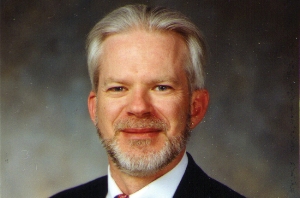Policy used to be a worthy but necessary capability that communications service providers (CSPs) relied upon to protect their networks. Now, the move to programmable network architectures through SDN and NFV puts policy at the heart of new network operations that must also include control, orchestration, management and analytics, writes Raymond Gagnon, vice president and head of operational support systems at Ericsson North America
Policy and analytics have always been an integral part of managing and securing communications networks. However, technological innovations in these areas have allowed infrastructure providers to offer CSPs additional value through advanced personalisation. The momentum of network functions virtualisation (NFV), software defined networking (SDN) and cloud technologies allows policy and analytics to serve mission-critical roles in managing and securing dynamic, autonomic, programmable networks; as well as providing the agility necessary to deliver personalisation and service innovation.
Ericsson has long been a leader in integrating policy with network management and real-time charging capabilities. Our Service Aware Policy Controller and Service Aware Charging and Control solutions have enabled more than 200 CSPs to deliver traffic control for a broad range of services, including IMS, contributing to an enhanced user experience and optimised utilisation of network resources.
With service-aware policy control, CSPs can use quality of service (QoS) control to ensure an enhanced user experience for services that are bandwidth intensive, latency sensitive or mission-critical, while optimising the utilisation of network resources. The CSP can differentiate its service offerings and generate additional revenues through service personalisation, since policies can be set on a peruser or per-user-group basis to control access to premium content, for example.
Service-aware integrated charging and policy control is vital in today’s rapidly growing market of new multimedia services on any screen. Through a combination of deep-packet inspection and heuristic analysis, CSPs can identify the content, events and usage required to provide high-quality, easy-to-use service delivery while simultaneously charging for those services in a way that makes sense to subscribers. This type of integrated approach to policy and charging allows the CSP to generate new revenues while improving the user experience. CSPs can offer bonus programmes and cross-promotion, as well as capitalise on the full potential of over-the-top (OTT) and multimedia services via campaigns and incentives.
The role of policy control in a SDN world is a major focus at Ericsson. We are pioneering a new model for network control that combines SDN, network management, cloud management, policy control user-data management and analytics to create an integrated control layer for network and cloud to increase efficiency by enhancing network programmability. This should lead to faster service deployments, reduced costs for CSPs and improve the user experience. The redefined common control plane for the network and cloud is augmented with real-time user and network analytics and correlated insights from a consolidated user data base, thereby enabling CSPs to offer real-time adaptation to consumer, business and application needs.
Key aspects of this redefined common control plane include the consolidation of user information, infrastructure condition and available resources. Automation is a key tenet of SDN and includes the dynamic, adaptive response of the infrastructure to changing conditions. This is possible through innovative approaches in the use of analytics and policy control. Ericsson’s approach combines our SDN capabilities with Ericsson Network Manager, Ericsson Cloud Manager, Service Aware Policy Controller and User Data Consolidation to create and integrate the control layer for holistic management and orchestration of physical and virtual infrastructure resources.
Next generation technologies open up new ways to extend the reach of CSP network capabilities and resources beyond traditional service delivery models. NFV enables dynamic deployment, adaptation and exposure of network functions by taking advantage of cloud, orchestration and automation technologies; whereas SDN enables the split of functions in the control and data planes.
Network control and programmability provides realtime and/or near real-time control, orchestration and management of resources for execution of network functions and applications, driven by dynamic policies and real-time analytics, with two key objectives:
- Intelligent software-driven resource control for self-managing networks
- Dynamic control of network resources by network functions, applications and customers and tenants
The COMPA approach
COMPA (control, orchestration, management, policy and analytics) is a cluster of functional blocks that operates at different layers of the CSP network; linkage of respective functional blocks within or across different layers constitutes the end-to-end framework for network control and programmability; this linkage in turn is enabled by intra- and inter-layer application programme interfaces (APIs) for cross layer exposure and feedback.
CSPs will decide on the distribution and hierarchy of individual COMPA units across a network, based on their unique circumstances and specific objectives. To support the individual CSP’s objectives, Ericsson’s flexible COMPA approach relies upon the underlying concepts of cross-layer federation, hierarchical control loop and policy cascading. Cross layer federation provides a controlled way to coordinate distributed, dynamic COMPA elements operating at different parts of the network.
Cross layer federation depends upon a hierarchical control loop. This multi-level distributed control loop provides end-to-end network control and programmability through policy cascading and federation. Each layer of the infrastructure has one or more policy jurisdictions. There a two types of policies:
- those related to the business offering
- those related to the infrastructure operations.
The policy model can be established and managed centrally for higher efficiency, or distributed for higher flexibility, depending on the CSP’s unique circumstances and objectives. Business offering-related policies can be cascaded down from the enterprise level to a specific policy jurisdiction, specific device or service instance, with operational policies remaining in their policy jurisdiction.
With the P in COMPA providing dynamic governance through the use of adaptive policies as part of the hierarchical control loop, it’s clear that robust policy capabilities will define the success of software defined networks. This capability can be utilised to create highly personalised service packages.
As a proof point, consider the success of Etihad Etisalat Mobily, which in working with Ericsson has carried out a successful test of the Ericsson Dynamic Service Chaining (EDSC) solution, achieving an important milestone in transforming its network using SDN. EDSC uses SDN technology to intelligently chain service functions, so that traffic from each subscriber traverses a particular set of service functions, as defined by the policy for that particular subscriber. By integrating SDN control with policy management, the traffic path for any arbitrary flow can be dynamically changed by simply changing the policy associated with that flow.






